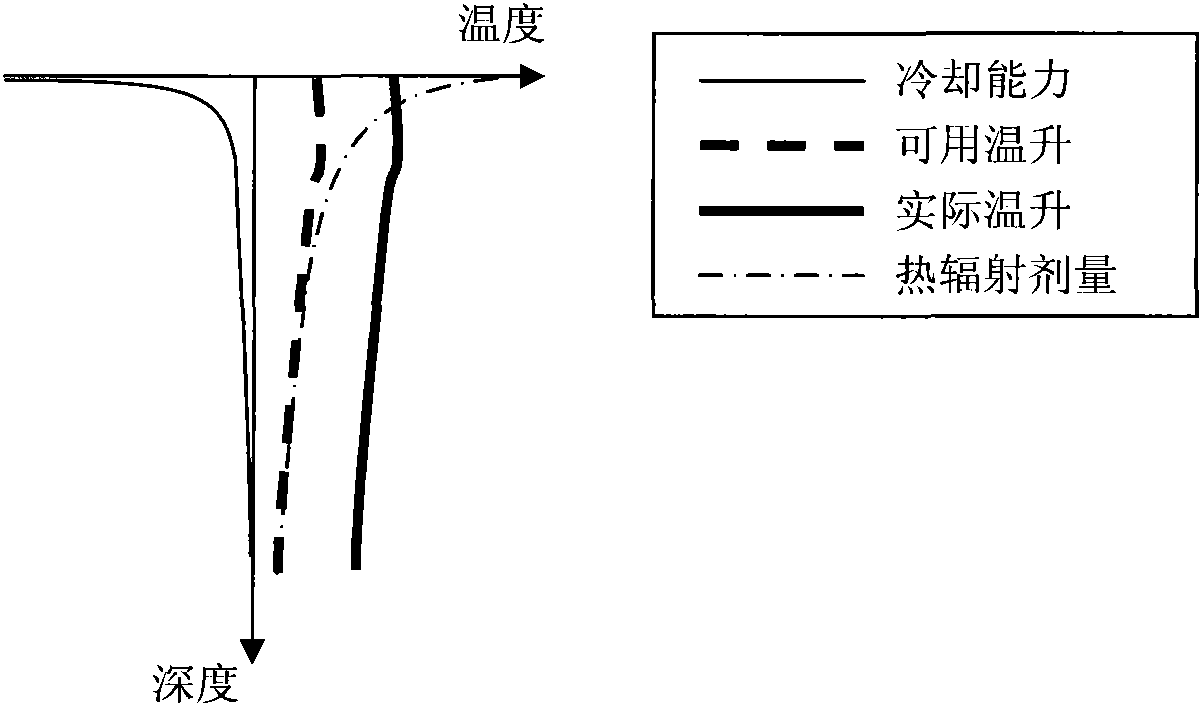Surface-cooling non-invasive radiation whole-body thermocuring method
A technology for radiant heating and body surface application in the medical field, which can solve problems such as easy burns on the body surface, avoid overheating and burns, and improve heating speed and efficiency
- Summary
- Abstract
- Description
- Claims
- Application Information
AI Technical Summary
Problems solved by technology
Method used
Image
Examples
Embodiment Construction
[0022] The present invention for the first time improves the heating range by means of the combined effect of cooling on the human body surface and deep radiation, so as to introduce heat into the body as much as possible under the premise of avoiding body surface burns. The heating of the body results from the energy of the focused radiation source and the heat absorption and conduction of the tissues. The exponential distribution of radiation energy from the outer layer to the body core and its energy accumulation on the body surface limit the total radiation energy. Increasing radiant power will cause excess energy and burns on the body surface. In order to avoid body surface burns, the total radiation energy must be reduced, resulting in a decrease in heating efficiency. Therefore, the present invention adopts body surface cooling measures through ice packs, cold water bags, phase-change materials and low-temperature cooling fluid circulation system to improve the accepta...
PUM
 Login to View More
Login to View More Abstract
Description
Claims
Application Information
 Login to View More
Login to View More - Generate Ideas
- Intellectual Property
- Life Sciences
- Materials
- Tech Scout
- Unparalleled Data Quality
- Higher Quality Content
- 60% Fewer Hallucinations
Browse by: Latest US Patents, China's latest patents, Technical Efficacy Thesaurus, Application Domain, Technology Topic, Popular Technical Reports.
© 2025 PatSnap. All rights reserved.Legal|Privacy policy|Modern Slavery Act Transparency Statement|Sitemap|About US| Contact US: help@patsnap.com



